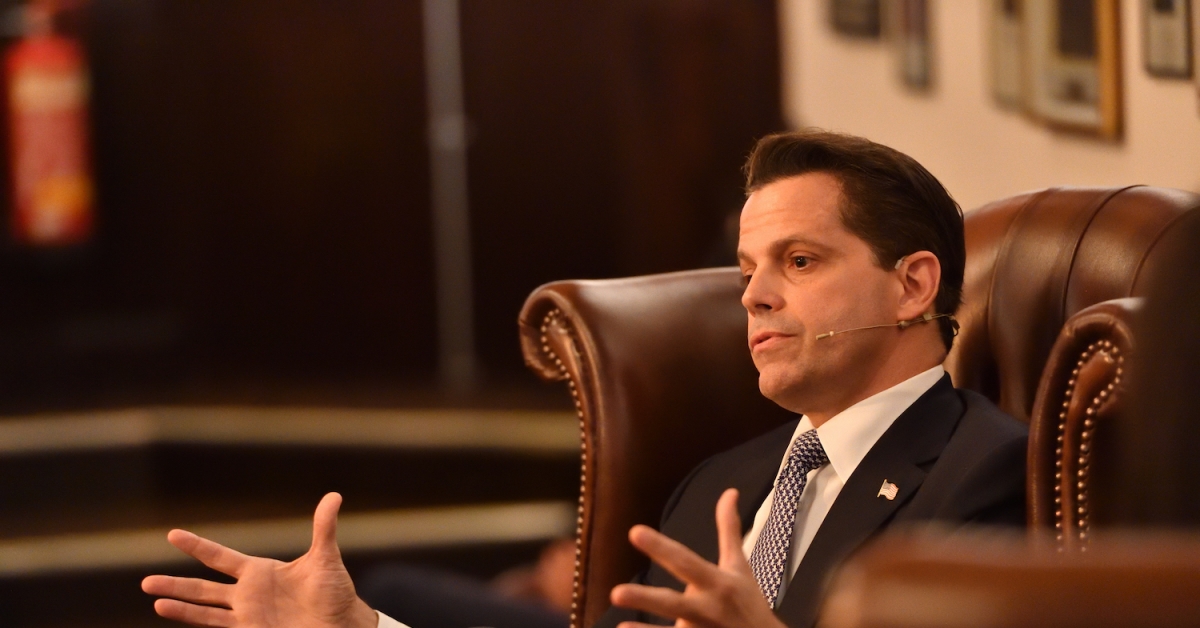The Changemaker: Glen Weyl Puts His Radical Ideas Into Action
Consensus:Distributed
The Changemaker: Glen Weyl Puts His Radical Ideas Into Action
COVID-19 is the great leveler. Glen Weyl, like all of us, is cooped up in his apartment.
“Love? The bleach stuff is fine for downstairs, I think,” he says to his wife from the other end of our Skype call. “Alcohol wipes would be great for the phones and for things like that.”
The coronavirus has turned us all into neat freaks. And it’s a refreshingly human moment from someone who, at times, seems like a superhuman force. Weyl is the fast-talking, faster-thinking, 35-year-old co-author of the manifesto “Radical Markets: Uprooting Capitalism and Democracy for a Just Society,” and founder of RadicalxChange, the movement that makes most blockchain projects – even the most out-there projects – look modest by comparison.
In the past month, Weyl has done more to fight the pandemic than wipe down counters and sanitize with bleach. As reported by CoinDesk, along with 22 other interdisciplinary and international experts he co-authored a 56-page paper from Harvard University that provides a roadmap for how society should respond to, and recover from, COVID-19, embracing a strategy of TTSI, or massive-scale Testing, Tracing and Supported Isolation.
Tune in to hear Glen Weyl with Vitalik Buterin at Consensus:Distributed, May 11, at 9 a.m. ET. Register here.
“COVID-19 is a profound threat to our democracy, comparable to the Great Depression and World War II. As ever, the greatest bulwark of democracy is us,” the paper begins. “What we do together – for one another and, even more, with one another – to fight this terrible disease, protect human life, secure our institutions and prevent the destruction of our economy will determine whether free societies will prove resilient in the face of existential emergency.”
Weyl should know. For the last decade he has thought deeply about thorny economic trade-offs and the blind spots of democracy. He invented solutions using market-driven concepts that are, well, radical. So what is RadicalxChange? It’s tough to categorize, much like Weyl himself. Politically it’s not exactly left-wing. It’s not exactly right-wing. It’s a group with both libertarians and socialists. According to its website, RadicalxChange is a “global movement dedicated to reimagining the building blocks of democracy and markets in order to uphold fairness, plurality and meaningful participation in a rapidly changing world.” But good luck explaining that to your parents.
In its fullest incarnation, RadicalxChange would topple everything we know about how property works. You could still own property – kind of – but your property would always be on sale, in a constant auction. It would massively redistribute wealth, making the proposals of, say, Elizabeth Warren, look like a tiny rounding error. It would change the way we vote. It would crack the issue of data privacy; suddenly, you would own your data and you could sell your data.

Ethereum’s Vitalik Buterin is a fan – he sits on the RadicalxChange Board of Directors. And the movement is not just a theory; some of its concepts have quietly, without much fanfare, been used by actual governments in Colorado and Taiwan. It fuels blockchain projects. A Canadian member of Parliament is working on RadicalxChange-inspired legislation.
And while the book “Radical Markets” debuted to gushing reviews, there has been surprisingly little written about the man who birthed the concept, Glen Weyl, who personifies the many paradoxes of RadicalxChange. He has been a socialist, Ayn Rand fundamentalist, academic, technocrat, economist, antitrust expert, political campaigner, expert on Artificial Intelligence and possibly “Ethereum’s chief economic thinker.” (Weyl bristles at that label.)
The paradoxes began with an infatuation with socialism… when he was six.
Radical origins
By Weyl’s own account he was a “very stereotypically picked-on, beat-up nerd.” At age 6 he embraced socialism and campaigned for Bill Clinton. Then came the Ayn Rand libertarian phase when he wore suits to middle school (think: Alex P. Keaton), read over 10,000 pages of economics literature in the eighth grade and even wrote a fan letter to economist Milton Friedman. (Friedman wrote him a nice reply.)
As a freshman at Choate, the exclusive prep school in Connecticut, he led the student Republicans. His adversary on the Democratic side? Ivanka Trump. Weyl remembers Ivanka as “extremely articulate, well put together, and I would not say especially intellectually formidable.” He launched a conservative student publication called The Right Side Magazine. A rising star in the conservative movement, he was invited to the 2000 Bush inauguration.
Look deeper. He was also the head of the LGBT group on campus and, especially after the Iraq invasion (which he opposed), he didn’t exactly fit the Republican orthodoxy. Weyl has never fit into an orthodoxy. He began to tilt left, and at age 17 he wrote an 8,650-word essay entitled “Conservative Liberalism” that embodies his joy of reconciling paradoxes. “American politics is ready for renewal,” wrote the teenager. “A new agenda is looming and the next great phase of liberal reform is just around the corner. All that is required is the formation of a new movement to carry forward this mantle.”
In its fullest incarnation, RadicalxChange would topple everything we know about how property works.
Quick snapshot of Weyl’s college life at Princeton: He roller-bladed across campus and straight into classes, including a Latin American politics course, where he met the woman who would become his wife. The two of them took a road trip to New Hampshire to campaign for retired Gen. Wesley Clark [a 2004 Democratic nominee for president]; during the drive he played her a cassette of his favorite Ronald Reagan speech, and says that’s when they began to fall in love. Then there was the undergraduate economics exam, where he intentionally left a question blank, and “only” scored an A-minus.
“You left this question blank,” the professor told him.
“The question is illogical,” Weyl shot back, and showed how the sums of the problem didn’t add up.
The professor told him to stop taking undergraduate classes and jump straight to the graduate track. The graduate students, naturally, resented this wunderkind. “I’m sure I was very arrogant and obnoxious,” Weyl admits now. But the fasttrack opened doors, gave him connections and planted seeds of the philosophy that would become RadicalxChange.
The whiz-kid kept dipping into new worlds. In one summer he interned at a hedge fund (which inspired his 2007 critique of arbitrage) and in another he interned with the Justice Department, where he dove into the minutia of antitrust law. Weyl seemed fascinated by everything. He would become an expert in artificial intelligence, political philosophy, and of course economics. In the Indiana Jones chapter of his career, Weyl flew to a distant part of Peru, then took a five-hour ride on a small raft to the jungle, where he did fieldwork to study the intersection of economic theory and botany or, specifically, an ants-and-plants symbiosis theory called Partner Fidelity Feedback, which he details in a scholarly paper for Harvard. He was 24.
Weyl spent years in and out of Latin America – Peru, Chile, Brazil, Colombia – as his girlfriend (and now wife) was there to study Latin American politics. The two of them wrestled with how to solve income inequality. In Brazil he stared at the favelas, those slums located on jaw-droppingly gorgeous hills, and thought it was crazy the people inside were living in poverty. Isn’t there a better way to allocate resources? Why have we designed society this way? He put more thought into property rights. He became fascinated by eminent domain. Why is the current system so clunky? How could it be improved?
These questions would spawn the idea of COST, or Common Ownership Self-Assessed Tax, which is essentially a modest proposal: Abolish private property. “Property is monopoly,” Weyl and his co-author, Eric Posner, would later argue in Radical Markets. The example they use, inspired by Weyl’s time in Brazil: Let’s imagine that the proposed route for a high-speed railway, which would clearly benefit society, is blocked by a few homes that refuse to sell. This is a common problem. One solution is eminent domain, which isn’t always great, as people (and they’re often poor people) are booted from their homes with scant compensation. Another solution is the status quo, but the moment a home-owner sniffs out that a railroad wants their land, they can jack up the price to an absurd level. Perhaps this is ethical and fair – reasonable people can differ on this – but it does, at the very least, seem an inefficient use of resources. Weyl and Posner estimate that “misallocation of resources due to monopoly and related problems” are reducing U.S. output by 25%, or trillions of dollars.
The solution? Abolish property. Or, rather, we would still own things but everything we own (more or less) would be in a state of constant auction, where we set a price for the home we own, and if someone opts to pay that price, poof, now they own your house.
The obvious skeptical question: But won’t people still want to, you know, have stuff? The answer: if you think your home has a market value of $300K, and you’d like to keep your home, then you might set the value at $360K – or whatever price would make you indifferent between staying and selling. Why not declare the value of your home at, say, $1 million, just to be sure? A clever mechanism called the Harberger tax (described more fully, and quite lucidly, in this post by Simon de la Rouviere) discourages you from pegging the price too high. Government bureaucracy is slashed because each person sets the value of their own goods, pays a tax (Weyl suggests 7%) on that declared value, and then would automatically agree to sell to anyone who matched their price. The tax revenue would flow to public goods and social welfare, causing a radical redistribution of wealth and corresponding reduction of income inequality.
They mulled over another small matter: How should democracies work? This brings us to, arguably, the more realistic concept that could be implemented: quadratic voting. Here’s how it works: Instead of the system we all know and love of one-person-one-vote (which Weyl and Posner call 1p1v), you “buy” a certain amount of votes and then you can allocate more votes on the issues you care the most about. This doesn’t necessarily involve cash. Let’s say everyone is given 100 credits, and those credits can be used to purchase votes – like how in a role-playing game, you’re given a set amount of Skill Points, and then you choose how to divvy up the points to attributes like Intelligence, Strength, Dexterity and so on. (Yes, I just revealed my true colors.)

Here’s the twist. The more votes you want to spend on any one issue, the costlier it gets – specifically, it gets quadratically more expensive. One vote costs only one credit, two votes costs four, five votes cost 25 and so on. This is intended to solve several problems with democracy, chiefly the “tyranny of the majority.” As Weyl rightly notes, in the United States the vanilla democracy of 1p1v is insufficient for protecting the interests of minority groups, so we invented workarounds like the Bill of Rights and a Supreme Court. Unchecked democracy alone doesn’t cut it and never has, from Ancient Greece to the troubles of today. Weyl’s argument is the minority groups, presumably, would have an intense motivation for protecting their rights and therefore they could spend more votes and topple the majority.
At first the ideas were just that – wispy ideas. Weyl joined the University of Chicago as an Assistant Professor of Economics and in something of a networking tour de force he made a list of 300 faculty members he thought he should meet; one of these was law professor Eric Posner, who took a shine to Weyl’s 2007 critique of arbitrage, which now seems prescient. Over a three-hour breakfast at the Original House of Pancakes, Weyl pitched Posner the concept of quadratic voting. Weyl says Posner told him, “If this is really right, this is the solution to most of the problems I’ve been working on in my career.” The two agreed to collaborate, and Weyl worked with a mathematician at the University of Chicago, Steve Lalley, to formally prove the theory. Years passed. He wrote paper after paper. Weyl and Posner launched a firm, Collective Decision Engines, to test out the theories of quadratic voting. He wrote more papers.
Then it became time for action that was more, well, radical. Weyl felt anxious about the world. Looming in the background was growing nativism, Brexit, Donald Trump. “I really started to get worried that there was a systemic crisis of the liberal order, or whatever you want to call it,” he says. Around that time he happened to see “Hamilton,” was inspired by it (I am not throwing away my shot!) and eventually decided to synthesize his ideas, in collaboration with Posner, in “Radical Markets.”
Oh, and he still had a day job. By then Weyl worked in Microsoft’s research division, and this is where he met another high-wattage futurist employed by Microsoft – Jaron Lanier, considered by many to be the creator of virtual reality, and the author of the data dignity manifesto “Who Owns the Future?”. Weyl pounced on Lanier’s ideas about how all of us own our data – and should get paid for our data – and folded them into “Radical Markets.” (Weyl and Lanier would become frequent collaborators and co-authors, including this recent piece from Foreign Affairs on how Taiwan used civic technology to fight the pandemic.) And, to round out the book, just in case they weren’t being radical enough, Weyl and Posner tossed in ideas for reforming immigration and an overhaul of institutional investing.
As for the book’s reception? The Economist tapped it as one of its Books of the Year and called it “an arresting if eccentric manifesto for rebooting liberalism.” Georgetown Professor Ananya Chakravarti deemed it “the most consequential work of political economy of the 21st century.” The former chief economist of the International Monetary Fund, Kenneth Rogoff, considered it “perhaps the most ambitious attempt to rethink democracy and markets since Milton Friedman.”
But maybe that would have been the end of it. “Arresting, eccentric” books come and go all the time. Niche intellectual manifestos, however well-executed, rarely make a dent in the world. Could Weyl actually change anything? Would his ideas have a chance of moving the needle?
In a parallel universe, one without Satoshi Nakamoto, perhaps not. But this is where blockchain enters the story.
Smart contacts
Dense, complicated, 110-page academic papers like “Property Is Only Another Name for Monopoly,” are not exactly click bait. Yet, in 2017, this paper that Weyl co-wrote with Posner, which articulated the backbone of the Harberger tax (the constant auctions) that would soon be featured in “Radical Markets,” was tweeted about by someone Weyl had never heard of – Zooko Wilcox.
Weyl wasn’t a crypto guy. “I was really negative on cryptocurrency,’ he says now. “I didn’t know anything about that world.” Then another crypto guy read the paper, mentioned it on Twitter and suddenly Weyl saw his Twitter mentions blow up.
Huh. Weyl didn’t really know what to make of it. “This is some cryptocurrency guy,” Weyl says now, laughing a bit, “who’s like a Russian-Canadian nut, who sounds like a Bond villain, who’s like 25 years old, and he has all this money.”

Weyl asked Buterin if he wanted to read an advanced copy of “Radical Markets.” The Bond villain said yes. Soon Buterin sent what Weyl remembers as “this 25-page long email with all of these comments, and the comments were amazing.” Buterin didn’t stop there. He posted a gushing, thoughtful, 5,300-word review of the book and exploration of the concepts.
“In many ways this sounded like exactly the sort of book, or set of ideas, that I’d been really looking forward to, but hadn’t properly seen yet,” Buterin tells me. You get the feeling that Buterin almost relished the chance to broaden his scope beyond blockchain, acknowledging that while most of his public persona has been defined by Ethereum, “I do also have broader interests,” he wrote, “of which the use of economics and mechanism design to make more open, free, egalitarian and efficient systems for human cooperation, including improving or replacing present-day corporations and governments, is a major one.”
A new intellectual partnership was born. The two would co-author a treatise on quadratic funding, and then formalize it as an academic paper, in partnership with Zoë Hitzig. Buterin admired Weyl’s knack for taking two seemingly opposing philosophies, like libertarianism and socialism, and then, somehow, teasing out the benefits of both in a creative way. That reminded him of the roots of blockchain.
“In the crypto space, as early as in 2010 or 2012, there were a lot of people interested in libertarianism, and a lot of people interested in socialism,” Buterin tells me. “There was this kind of idealistic energy and the RadicalxChange of ideas seemed, very clearly, like a way to channel that energy. This feels like something that might actually work.”
Meanwhile, Weyl had a book to promote. In 2018, he gave 150 talks and attended gobs of conferences, and he began meeting kindred spirits who seemed to welcome these radical ideas. He sensed something brewing. Something bigger than his book. What if this actually has legs? Nearly two decades ago, as that awkward, brash, roller-blading teenager, Weyl had written, “American politics is ready for renewal…All that is required is the formation of a new movement to carry forward this mantle.”
Now, finally, he found his movement.
The new movement
The CEO of RadicalxChange is Berlin-based Jennifer Lyn Morone, who is something of a performance artist/philosopher/activist/provocateur. Years ago she began obsessing about how all of us freely provide data that’s being harvested by corporations, and she created a part-satirical project of “incorporating” herself as a data producer. (Her website is a delightful commitment to the bit.) The core message: You are a data factory. You pump out data – your likes, your age, your gender – that is monetized by the Facebooks of the world. In 2018, The Economist featured her in a story called “Data Workers of the World, Unite.” She told The Economist writer she wanted to start a data cooperative – like a union, to represent all of us “data laborers” – and the writer said he happens to know a guy who wants to do the same thing: Glen Weyl.

You can see where this is going. Soon a motley group of radicals that included Weyl, Morone, Buterin and Matt Prewitt (who has a crypto and legal background, and is now the president of RxC) planned the 2019 RadicalxChange conference, held in Detroit. It lured in blockchain notables including Zooko Wilcox, Santiago Siri and Simon de la Rouviere; Buterin batted cleanup with a keynote speech. “We all seemed to be on the same page, value-wise,” remembers Morone. “We all come from different parts of the political spectrum. But we didn’t talk about politics.” (You’ll find a great summary from CoinDesk’s Christine Kim.)
They created local chapters and meet-ups, blockchain community-style. The chocolate and peanut butter of blockchain and RadicalxChange began to blend; the list of projects incorporating RxC concepts now includes Democracy Earth, Sebenz.ai, Streamr, EOS and Gitcoin, which uses quadratic funding to determine how to reward worthy projects. (To some controversy: One of these “worthy projects” was $20,000 for the operation of a Twitter account, which Buterin takes some time to carefully, and perhaps grudgingly, defend.)
Buterin views quadratic funding and data dignity, in particular, as concepts that could have a realistic chance of implementation. “Quadratic funding is nice because it’s a thing that you can kind of go off on a corner and try on a small scale, and if it works on a small scale, you can try it in a bigger scale,” he says in his rapid-fire voice. “It’s very radical, but at the same time, you can implement it on pretty much any scale. That’s a really nice property.” (That said, it’s not accurate to peg RadicalxChange as primarily a blockchain play. Weyl estimates that only 25% to 30% of the RxC community is in the blockchain space; CEO Jennifer Morone, for example, does not have a crypto background.)
RadicalxChange has some wins to celebrate. In 2019, the Democratic caucus of the Colorado state legislature, after consulting with Weyl and Democracy Earth, actually used quadratic voting to decide which bills to pass. This actually happened. Specifically, the Democrats (who held a majority) were empowered to authorize $40 million in state funds, but they had to somehow choose from nearly 100 bills that totaled $140 million worth of potential projects. Which bills should they green-light?
Normally they would just do a simple vote. But that would lead to only a few clear-cut winners (the four or five projects everyone agreed upon) and then one or two votes for everything else, creating what could be a messy 90-way tie of dribs and drabs. Instead, each Democrat was given 100 virtual tokens, and could then “buy” votes with those tokens – quadratically. One token for one vote, four tokens for twp votes, or they could blow their whole wad of 100 tokens for 10 votes. The system worked. Quadratic voting, as intended, sussed out which bills were actually preferred by voters with real intensity. “There was a pretty clear signal on which items, which bills, were the most important for the caucus to fund,” Chris Hansen, chair of the House Appropriations Committee, told Wired. “The difference was much more clear with quadratic voting.”
RadicalxChange has done consulting work for prediction market ForeTold.io It has partnered with Polco.us, a platform meant to boost civic engagement in municipalities, to integrate quadratic funding. It has a grant to run a quadratic voting pilot in Nairobi. A member of the Board of Directors, Audrey Tang, is the Digital Minister of Taiwan and helped implement quadratic voting for Taiwan’s Presidential Hackathon. (More recently, Tang was praised for quickly organizing an innovative, AI-driven response to COVID-19.)
And then there’s the policy work. RadicalxChange wrote a 35,000-word Data Freedom Act, which Prewitt admits is “kind of a mouthful,” intended as a roadmap for future legislation – such as creating a union, of sorts, for data laborers. (Data laborers meaning you and me.) The goal is to influence policy thinkers, educate politicians and ultimately to craft legislation.

RadicalxChange already has one political ally: Canadian Parliamentarian Michelle Rempel Garner, who Weyl bullishly describes as “Canada’s next likely Prime Minister.” The young and charismatic Rempel, who’s in the Conservative Party, and who was twice named a Parliamentarian of the Year, is tough to categorize politically. “On Twitter she’s a total populist politician, but she has a really sophisticated economics perspective,” says Weyl. “And she kind of has certain types of libertarian-ish instincts, and at the same time she’s very pro public-goods.” Sort of like Weyl himself.
“It doesn’t have a partisan bent,” Rempel says of RadicalxChange. “I’m talking to a [RadicalXChange] colleague in Italy, and I think he’s a socialist, but he’s looking at how to use quadratic voting to democratize union participation, and that doesn’t have a partisan bent to it.” There are two RadicalxChange concepts she’s hoping to enact with legislation: data dignity and quadratic financing. (The quasi-abolishing of all private property will have to wait.)
In January, Canada’s Broadcasting and Telecommunications Legislative Review (BTLR) Panel released a tome outlining how to regulate data privacy. Rempel wasn’t a fan. “It calls for sweeping reform but with a very, very heavy government-regulatory approach on privacy,” she says. As for that other solution for data privacy, GDPR? Rempel points out that the enforceability is a joke (I’m paraphrasing), as users simply click through every “Accept All” notification and nothing really changes.
Rempel’s plan for Canada: “Take the concepts in Article 20 of the GDPR, which basically says that you can contact Spotify or any company and ask them to give you your data, and then what’s in the California Consumer Protection Act, the concept of saying you have a right to tell a company not to sell your data without your consent, and start looking at ways to marry those two concepts, to empower people to own their data.”
This idea of owning your data, and potentially profiting from it —a very blockchain idea — would be a concrete realization of Jennifer Marone’s performance art, of Lanier’s book, of Weyl and Posner’s manifesto. And as for quadratic financing? Rempel wants to pilot QF in certain pockets of the government, such as the Canadian Media Fund, using it to more intelligently award grants to artists and creatives.
That likely won’t happen anytime soon. The Canadian Parliament is not, en masse, prepared to launch a RadicalxChange-style revolution. “If you ask many Parliamentarians what the libra is, they would have no idea,” Rempel says, chuckling, adding that there are only three members of Parliament, including her, who currently back the quadratic funding concept.
She expects that number to soon grow because her team is putting together working groups to educate her colleagues. (Some of that work is stalled because of COVID-19.) And she sees much of the RadicalxChange platform as something that can actually happen, not just naive idealism. “I think that this movement has legs,” says Rempel. “I really do. And I don’t say that lightly, I say that as a jaded politician.”
Weyl knows the movement has legs. He knows it has grown beyond the book, beyond his theories, and beyond his long-ago daydreams. But will the change happen fast enough? COVID-19 has him worried. Not just about his family’s health, the health of the community or even the economic fallout. He’s worried about mass social unrest, and even the basic functioning of governments. This could be a time of upheaval. Riots. How should society ration scarce goods?
Theoretically, RadicalxChange concepts, like quadratic voting, could help be a solution. “Basic governance institutions are going to be challenged,” he says, at the end of our final Skype call. “The question is, what can we build up in their place?” He hopes RadicalxChange can help be the answer, or at least part of the answer, to these looming challenges to governments. Then he pauses, and Weyl rarely pauses. “I fear we didn’t go quickly enough to do that. So we’ll see.”









